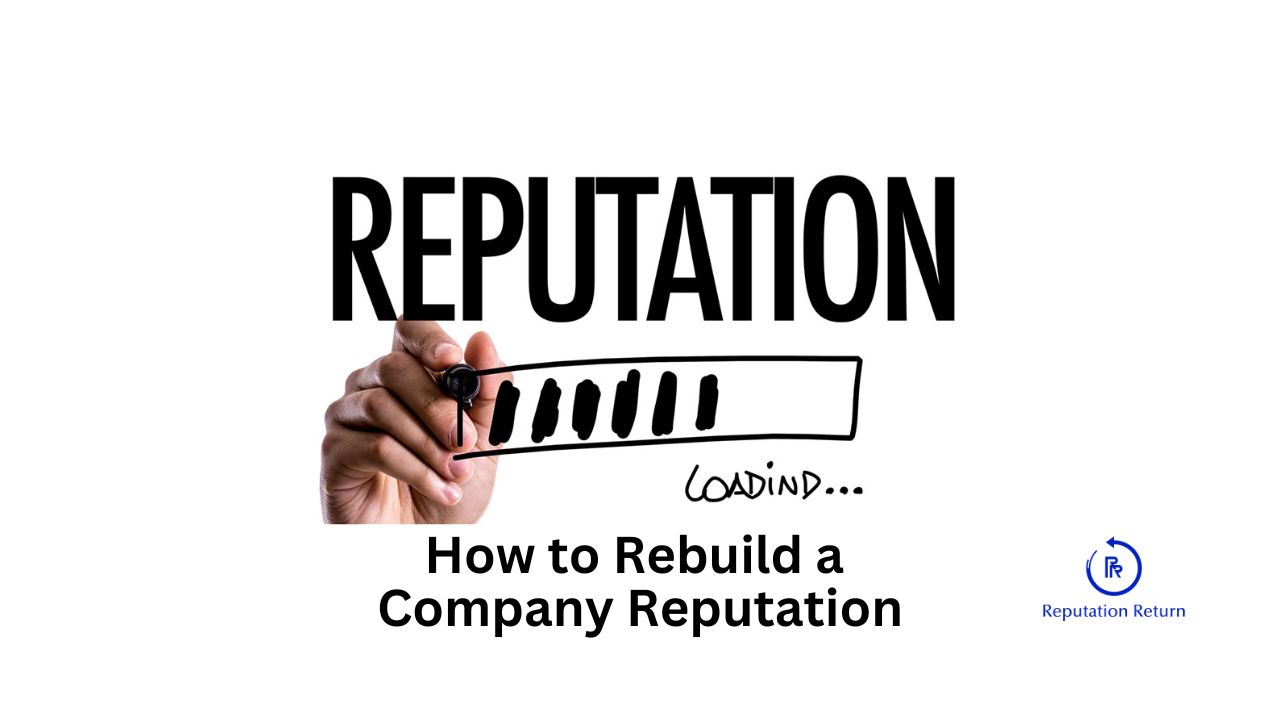In the corporate world, reputation is a vital asset. A company’s reputation impacts its bottom line, stakeholder relationships, and overall market positioning. Rebuilding a tarnished reputation is a complex process that demands strategic planning and execution. This article delves into how companies can restore their reputation, emphasizing the importance of online reputation management from both a preventative and crisis management perspective.
Understanding the Impact of Reputation
A company’s reputation is its public perception, shaped by customer experiences, media coverage, industry standing, and stakeholder interactions. A negative event can significantly harm this perception, leading to loss of trust, decreased sales, and difficulties in attracting and retaining talent. Thus, rebuilding a tarnished reputation is crucial for long-term sustainability and growth.
The Strategic Approach to Rebuilding Reputation
Acknowledge and Assess
The first step in rebuilding a company’s reputation is to acknowledge the issue. This involves owning up to any mistakes and publicly addressing the situation with transparency. Acknowledgment should be followed by a comprehensive assessment of the damage. Companies need to understand the root cause of the issue, the extent of the impact, and the sentiments of their stakeholders. This assessment often involves gathering feedback through surveys, monitoring social media channels, and analyzing media coverage.
Develop a Comprehensive Crisis Management Plan
A well-structured crisis management plan is essential. This plan should outline immediate actions to mitigate the damage and long-term strategies for reputation rebuilding. Key elements of a crisis management plan include:
- Communication Strategy: Establish clear communication channels to keep stakeholders informed. This involves crafting a consistent message that addresses the issue, outlines corrective measures, and conveys a commitment to improvement.
- Stakeholder Engagement: Actively engage with stakeholders, including customers, employees, investors, and the media. Transparency and responsiveness are crucial in rebuilding trust.
- Corrective Actions: Implement immediate corrective actions to address the issue at hand. This could involve product recalls, service improvements, or policy changes.
Enhancing Your Company’s Online Presence
Your company’s online presence plays a pivotal role in shaping its reputation. Effective online reputation management (ORM) involves proactive and reactive strategies.
Proactive ORM
- Content Creation: Publish positive content that highlights the company’s strengths, achievements, and values. This includes blog posts, press releases, case studies, and social media updates.
- SEO Optimization: Optimize online content to ensure that positive information ranks higher in search engine results, effectively pushing down negative content.
- Customer Engagement: Actively engage with customers on social media platforms, review sites, and forums. Promptly address concerns, thank customers for positive feedback, and showcase a commitment to customer satisfaction.
Reactive ORM
- Monitor Online Mentions: Use monitoring tools to track online mentions of the company. This helps in promptly identifying and addressing negative content.
- Content Removal: Work with legal teams and platform administrators to remove defamatory content. Utilize DMCA takedown requests and other legal avenues where applicable.
- Crisis Response: Respond swiftly to online crises with clear, honest, and empathetic communication. Address the issue head-on and outline steps being taken to resolve it.
Implementing Corporate Social Responsibility (CSR)
Engaging in CSR activities can significantly aid in reputation rebuilding. CSR initiatives demonstrate the company’s commitment to societal well-being, which can help regain public trust. Companies should focus on initiatives that align with their core values and have a meaningful impact. This could include environmental sustainability efforts, community development projects, and charitable contributions.
Internal Measures for Sustained Improvement
Rebuilding a reputation also involves addressing internal issues that may have contributed to the tarnished image. Conducting an internal audit helps identify systemic problems, which can then be rectified through policy changes and employee training programs. Enhancing corporate governance, promoting ethical behavior, and fostering a positive workplace culture are crucial steps in this direction.
Continuous Monitoring and Adjustment
Rebuilding a reputation is not a one-time effort but an ongoing process. Companies need to continuously monitor their reputation through various metrics, such as customer satisfaction scores, brand sentiment analysis, and media coverage. Regularly reviewing and adjusting strategies based on feedback and monitoring results ensures sustained improvement.
The Role of Reputation Return
Rebuilding a company’s reputation is a multifaceted process that requires strategic planning, consistent efforts, and professional expertise. Implementing a comprehensive online reputation management plan is essential for mitigating damage and restoring public trust. Reputation Return offers you the expertise and tools needed to navigate this complex process. By partnering with Reputation Return, you can effectively monitor their online presence, manage crises, and implement proactive measures to rebuild their reputation, ultimately achieving peace of mind and long-term success.
Do you have a question about your company’s reputation management? Ask here >>>

